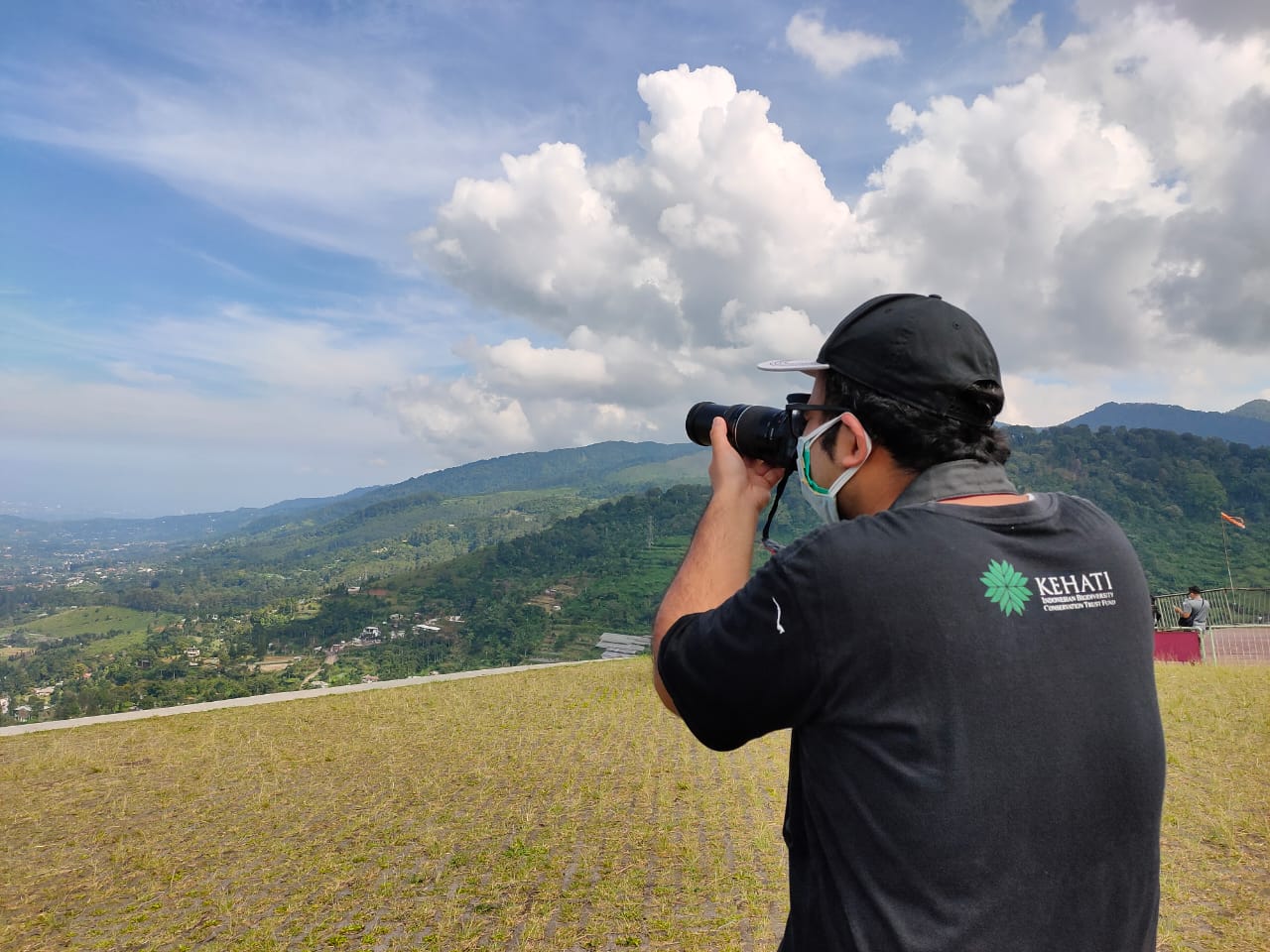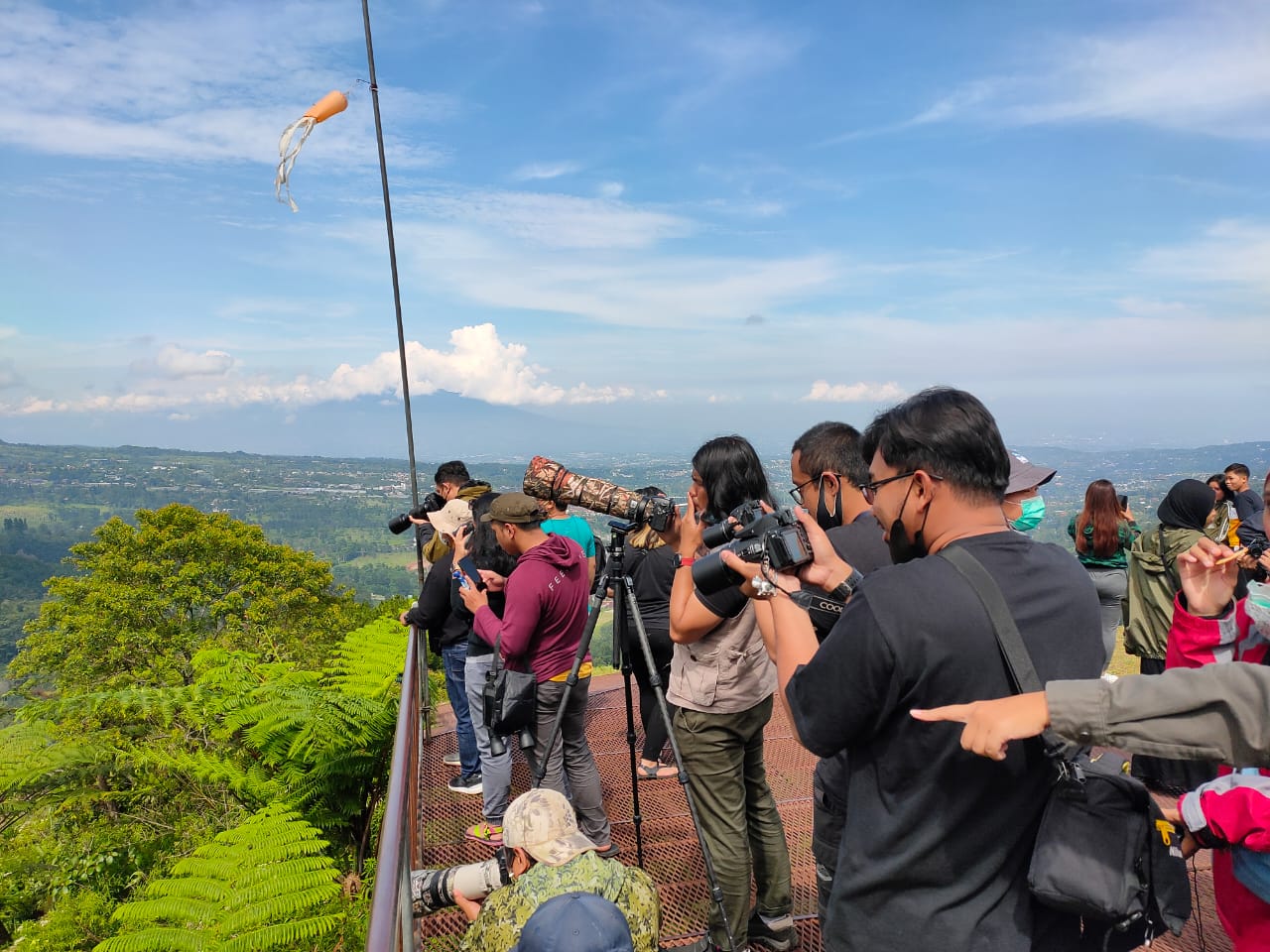Getting to Know the Amazing Migratory Raptor Birds

-
Date:
01 Nov 2021 -
Author:
KEHATI
Every May and October, the citizens of the world commemorate World Migratory Bird Day. This celebration is important not only to get to know bird diversity but also as an indicator of the natural condition serving as the habitat for these flying animals. This is further strengthened with today’s theme, namely “Sing, Fly, Soar – Like a Bird!”, where the citizens of the world are expected to voice their aspirations for the conservation of migratory birds and their habitat.
Different from the previous commemoration in May, which observed water birds, this October the Biodiversity Warriors of KEHATI Foundation, alongside Burung Indonesia, observed the birds of prey (raptor) migrating across the Puncak area, Bogor, West Java. Observing these migratory animals that sit on top of the food pyramid is always fascinating, especially in terms of its connection to the condition and conservation of nature, as well as the impact they can give.
Unfortunately, these birds of prey are highly threatened when migrating, including across Indonesia. The impact of climate change, deforestation, degradation, and land fragmentation damage and reduce their habitat and food sources. Not to mention illegal poaching.
“Observing these birds of prey is really important. In addition to balancing the population of other animals, they can also serve as indicators of the natural condition in which they stop by or heading to. Observation data will support analyses for conservation that will be done by relevant parties,” explained the Director of Communications and Partnership of KEHATI Foundation, Rika Anggraini.
This year’s theme “Sing, Fly, Soar – Like a Bird!” invites the world’s population to voice their concern for the conservation of birds and their habitat. The first thing to do is by observing migratory birds. Besides fun, by doing observation, we can also provide education on the migratory birds, including birds of prey.

Several unique facts regarding these migratory birds of prey are:
The road taken by birds of prey or raptors from the northern to the southern hemisphere is full of death-defying struggles. For the sake of going to areas that provide enough food, they are willing to travel across continents thousands of kilometers apart. Some of the risks they face are extreme weather, getting lost, and being hunted by illegal poachers. They face these risks both when they are migrating away and coming back to their original area. You can say that half of the lives of birds of prey are spent on these death-defying journeys.
These birds of prey can know when to migrate by detecting temperature change in their original area. In addition, they see the sun’s position to learn the season in their original areas when they are in their migration area. When migrating, they use the stopover area to rest, find food, and avoid extreme weather. After feeling fit enough and weather is on their side, they continue the journey to their destination. Indonesia as a stopover and destination areas plays an important role to maintain the success of the migration process and the conservation of these birds of prey. In addition, when leaving in groups, they will divide roles to save energy and avoid the threat of other birds of prey.
Migratory birds have the navigational skills that impress scientists. The birds’ complex spatial memory enables them to create memory maps of locations they know, including the relationship between locations, signs, and special landscapes. This ability can also connect locations they have visited and predict the safest flight route (source: Burung Indonesia).
Gustav Kramer, a bird researcher in 1950, said that in order to arrive in the migration location, besides relying on directional orientation, migratory birds have another navigational method similar to sun compass. With this navigational ability, migratory birds can reduce the risk of losing direction by calculating the movement of the sun.
To save energy, birds of prey uses an incredible flying technique. Use the soaring technique, they utilize the geothermal wave so that they do not have to flap their wings. They also use slope soaring from sloping valleys or surfaces to glide. This is the technique used by humans in the aviation industry.
By learning the facts about these migratory birds of prey, hopefully the community, especially young generations, can be more concerned and engaged in conserving birds in Indonesia.
 |
 |
Sikep madu asia (Pernis ptilorhynchus), a species of raptors in the family Accipitridae crossing the observation area.
